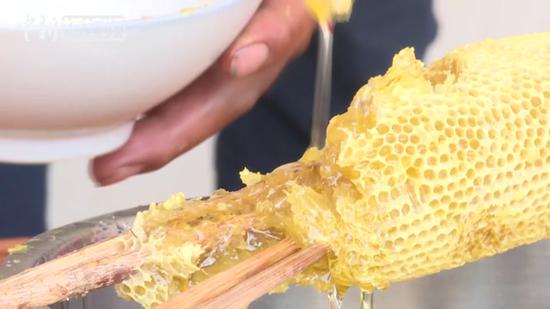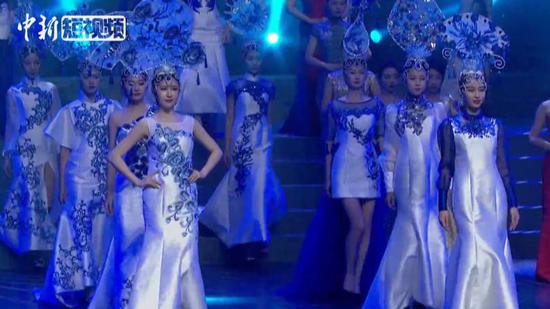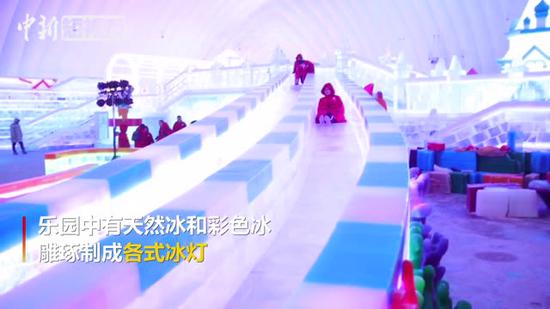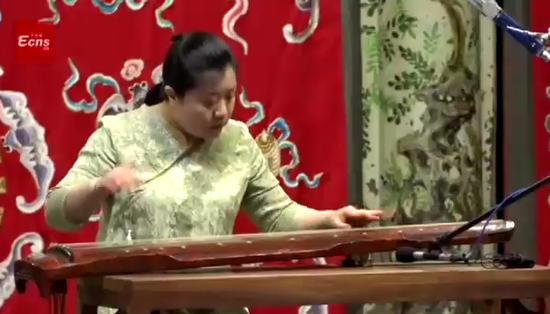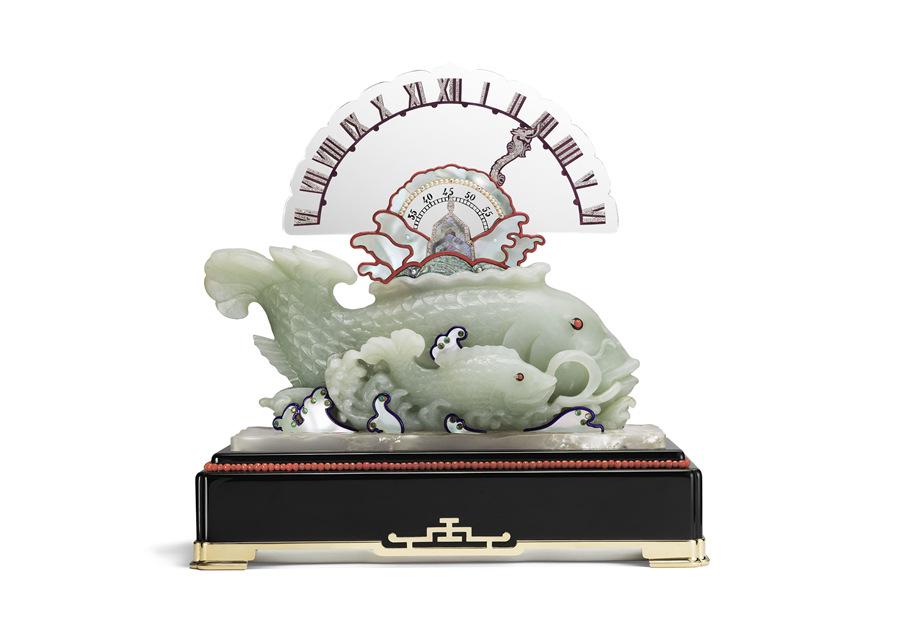
Carp clock with a retrograde hand made in 1925. (Photo provided to China Daily)
The Palace Museum and Cartier team up to host one of the cultural institution's largest shows on the theme of craftsmanship and restoration over the centuries.
For Wang Jin and Qi Haonan, two restorers of antique timepieces at the Palace Museum in Beijing, their months spent in quasi-seclusion in 2017 at a watchmaking studio in La Chaux-de-Fonds, Switzerland, was a crucial period of exploration.
They took six movements of timepieces dating back to the late 18th century to the mountainous town to work on their restoration with their counterparts from Cartier, the French jewelry and watch-making house. A documentary recording the project was released online last year.
The Palace Museum, which is also known as the Forbidden City, was China's imperial palace between 1420 and 1911.
"The collaboration was not only a dialogue between the restorers but an exchange of techniques and expertise," Wang says. "We worked together in a climate of utmost sincerity, overcame a number of challenges and accomplished our mission in full."
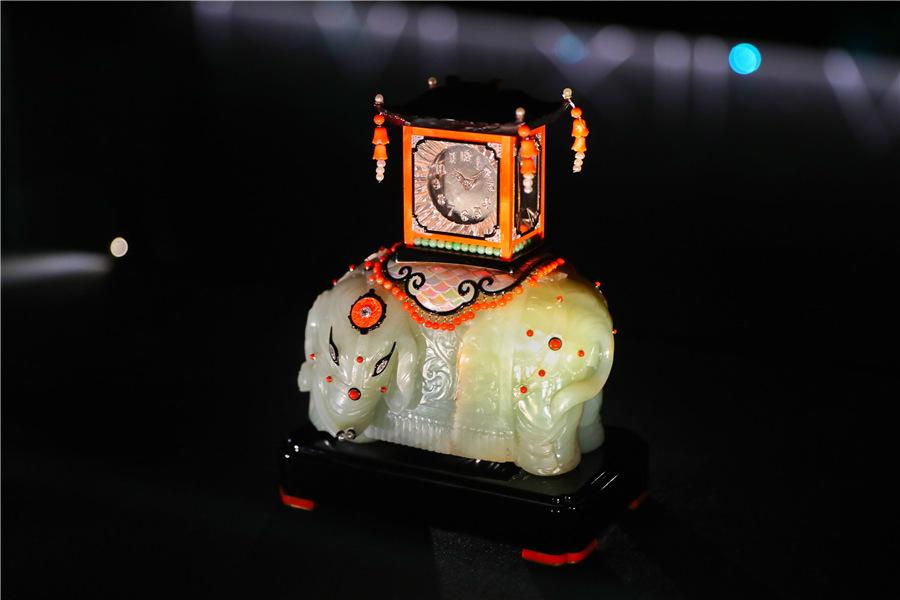
The Palace Museum and Cartier host one of the cultural institution's largest shows on the theme of craftsmanship and restoration over the centuries. (Photo provided to China Daily)
Their success also lead them to setting up a cross-cultural mission to celebrate craftsmanship.
After the restoration, researchers from both sides began to explore the possibility of presenting a joint exhibition to showcase the splendor of timepieces through the ages. It has now expanded into a much wider plan, and one that doesn't just cover horology.
Grand show
Beyond Boundaries: Cartier and the Palace Museum Craftsmanship and Restoration Exhibition opened on Saturday at the Meridian Gate Galleries of the museum in Beijing. It places more than 800 artifacts dating from the Ming Dynasty (1368-1644) to modern times on display, making it one of the largest exhibitions in the history of the Palace Museum.
As a highlight of the exhibition, which is to run through July, the six timepieces-four clocks with exquisite decorations and two gold watches benefiting from the joint restoration-are displayed in Time Memories, one of three themed sections of the exhibition.
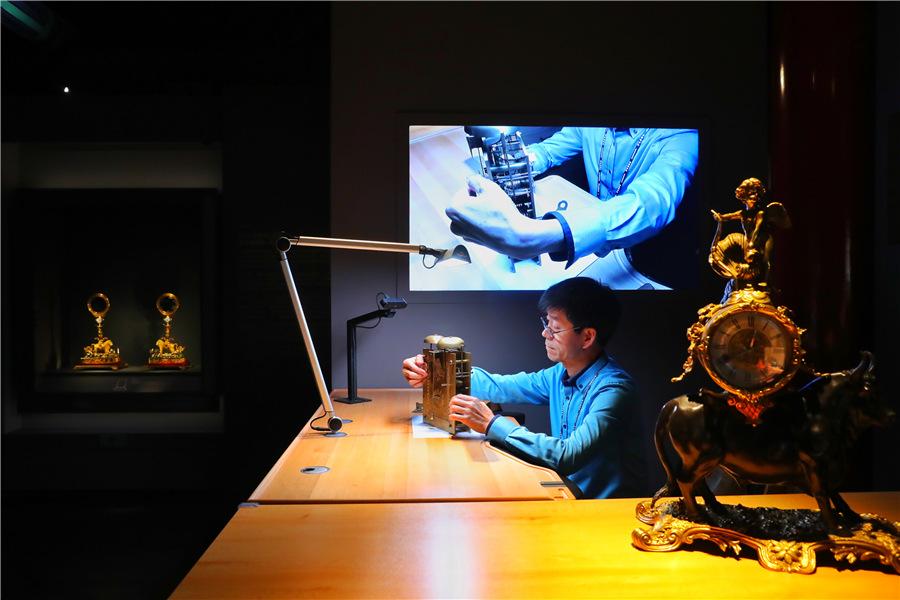
Wang Jin, an antique clock restorer, demonstrates his craftsmanship to visitors at the exhibition. (Photo provided to China Daily)
The Palace Museum is generally believed to hold one of the world's best collections of mechanical clocks from the 17th and 18th centuries, thanks to the wealth of the Qing Dynasty (1644-1911) emperors and their habit of ordering the latest timepieces from Europe.
"The level and quality of the (timepiece) objects from the Forbidden City's collection is just extraordinary," says Pierre Rainero, Cartier's director of image, style and heritage. "It's even difficult to find their equivalent in Europe because many of them were destroyed over time."
Other precious timekeeping instruments from both institutions help to form a cultural dialogue. For example, a similar pair of gravity clocks from the collections of the Palace Museum and Cartier are presented together for juxtaposition. The clocks, whose movements are driven by gravity that makes them roll down slowly on an inclined base, both have to be reset by hand.
There are also abundant exhibits of "mystery clocks", the signature objects made by Cartier where clock hands appear to "float" on transparent dials without any apparent connection to the movement. Elements of Chinese inspiration were also used in the decoration of these timepieces.
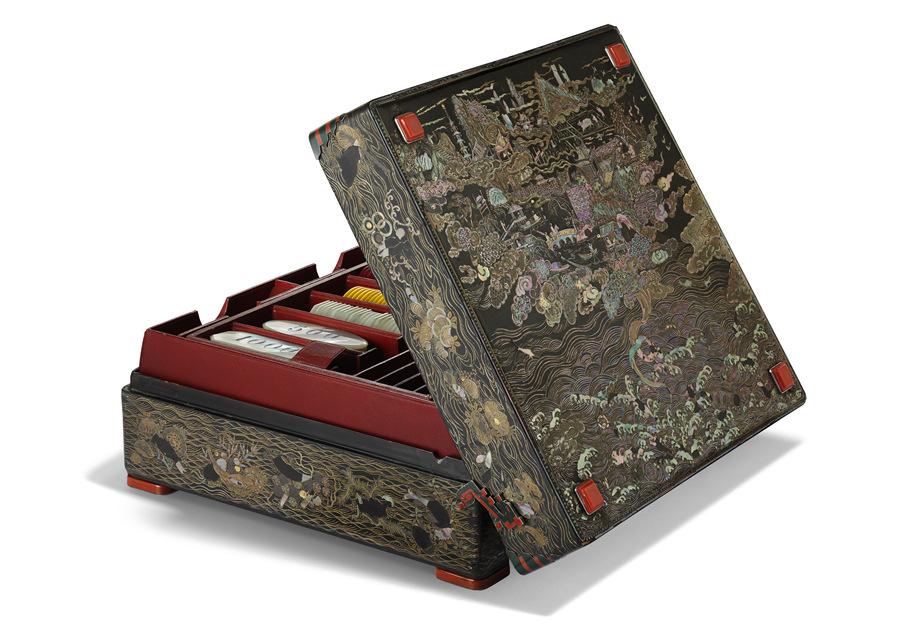
A 1927 lacquer bridge case shows Chinese inspiration in Cartier's design. (Photo provided to China Daily)
Speaking of "beyond boundaries", the theme of the exhibition, Cartier International CEO Cyrille Vigneron explains in an interview with China Daily that "art is a universal language".
"If it touches you, it touches you," he says. "You don't have to put any words behind it... This exhibition is a journey through time, space and culture."
Echoing this idea, the exhibition's curators widened the scope of their search for artifacts to a broad range of countries and collections.
Other than artifacts from the Palace Museum and the Cartier Collection, many of the objects came from other public institutions, including the Metropolitan Museum of Art in New York, the National Gallery of Australia, the Qatar Museums and the Musee International d'Horlogerie (International Museum of Horology) in La Chaux-de-Fonds, as well as some other private and royal collections.
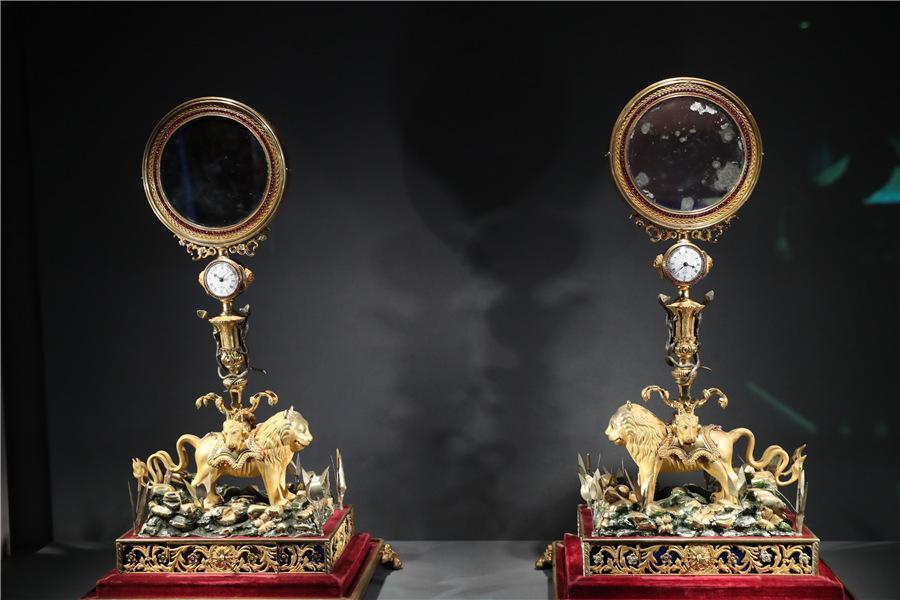
A pair of clocks with mirrors and lion-shape decorations are among six timepieces benefiting from the cooperation between the Palace Museum and Cartier. (Photo provided to China Daily)
The Symbols of Power section of the exhibition displays tiaras, bracelets, necklaces and other items of jewelry owned by royal courts and celebrities from all over Europe, Asia and North America, which combine to present a sparkling fiesta for the eyes. An emphasis was particularly placed on presenting the rise of the modernist style of the early 20th century, marking the birth of the Art Deco movement and plotting the evolution of fashion.
"It's difficult to say where their home is because they are part of the patrimony of history and humanity," Vigneron says.
Wang Yuegong, Chinese curator of the exhibition and director of the department at the Palace Museum studying royal life and imperial rituals, notes that it is a pity that they were unable to find a Chinese emperor in the Forbidden City who once owned Cartier jewels.
However, this absence did not curb their creativity.
"Considering that jewels represented power in the West, we have to confess that there are boundaries between the different cultures," Wang Yuegong says. "And that's the reason for mutual learning. These exhibits show visitors how the lines between different cultures can become blurred and begin to merge naturally."
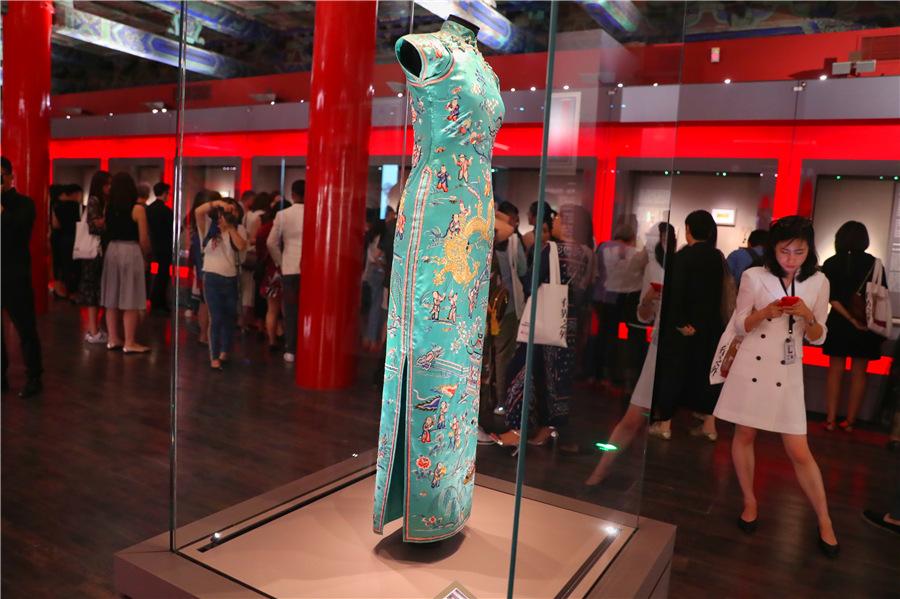
A qipao, which was once owned by Chinese fashion icon Oei Hui-lan, is part of the exhibits. (Photo provided to China Daily)
His team spent months scouring the warehouses of the Palace Museum searching for symbols of Chinese power such as an imperial robe owned by Emperor Qianlong (1711-99), a gold imperial seal and chaozhu-beads worn by high officials during ceremonies at the royal court.
"Nevertheless, we can see that both the Eastern and Western traditions tend to reveal power through outstanding craftsmanship," Wang Yuegong says. "That's an emotional resonance."
Chinese inspirations
In preparation for the exhibition, Cartier also searched through its archives to reveal many of its lesser-known objects that have links with China.
Oei Hui-lan, wife of Chinese diplomat Wellington Koo (1888-1985), who is best known for being one of China's representatives at the Paris Peace Conference in 1919, stands out as a fashion icon for her refined tastes in jadeite. One of the many qipao (cheongsam) she once owned appears in the exhibition on loan from the Metropolitan Museum of Art.
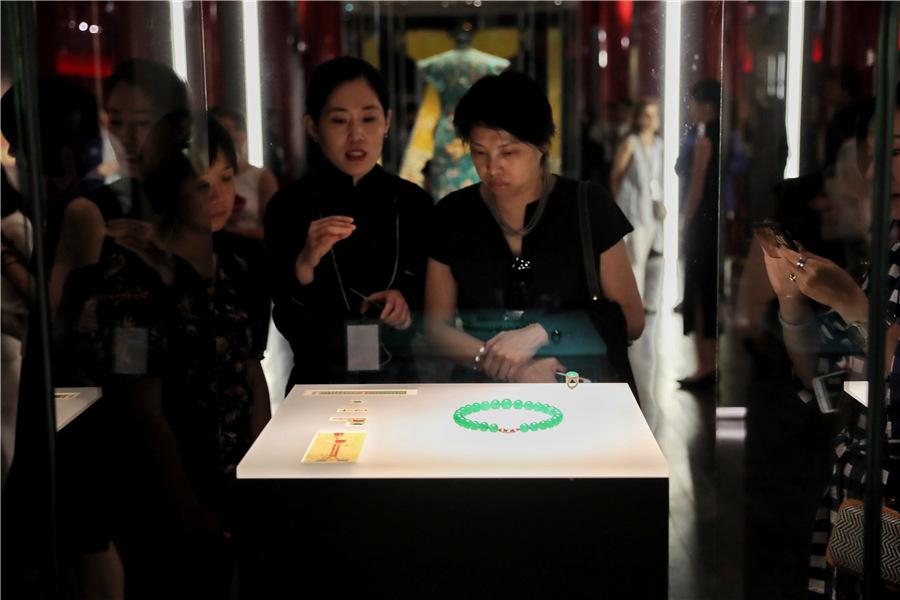
The Palace Museum and Cartier host one of the cultural institution's largest shows on the theme of craftsmanship and restoration over the centuries. (Photo provided to China Daily)
"Since the 1930s, jadeite has emerged as a distinctive feature in jewelry that is sought after by socialites from the East and West," says Wang Hebei, a researcher at the Palace Museum.
"Ranked as one of the top gems, jadeite has become one of the few stones, whose supply, distribution channels and craftsmanship were firmly controlled by Chinese dealers, while the standards of appraisal were set out by Chinese jewelers and intellectuals."
Curators also found the first recorded Chinese customer of Cartier-Aisin-Gioro Tsai Lun. Coincidentally or not, this prince who bought a watch in Paris in 1914 happens to be the great-great-grandson of Emperor Qianlong, a major contributor to the vast collection of clocks in the Forbidden City. A similar watch to the one prince Tsai Lun bought is also on display.
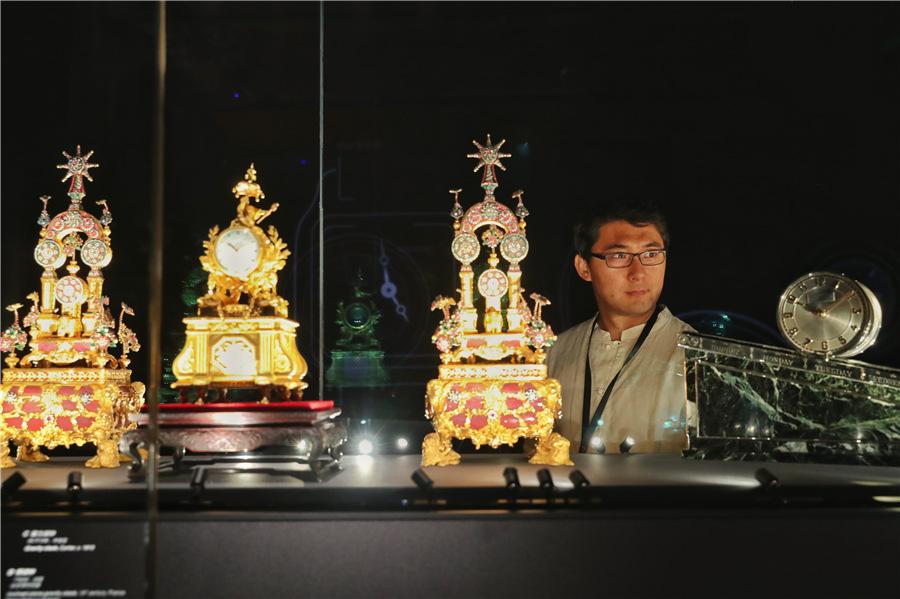
A visitor views top-tier timepieces at the exhibition. (Photo provided to China Daily)
According to Rainero, a passion for Chinese culture became a trend in the West during the 1920s, and fashion brands were quick to respond to the ever-growing demand. Chinese aesthetics and motifs influenced not only the design of jewelry sets, watches and clocks, but also the workmanship of specific materials, nourishing an entire process of creation.
That period is also reflected in the section Chinese Inspirations at the exhibition through artifacts made of typical materials and patterns rooted in the traditions of Chinese culture.
For instance, the Carp clock from 1925 was made of a piece of carved ancient jade depicting two fishes swimming in the waves. Carp is appreciated for its courage and tenacity in Chinese culture, allowing it to swim upstream and change into a dragon.
Elements of Chinese culture seems to be ubiquitous in European upper-class life during this era, which are reflected in a range of exhibits, from a lacquer bridge case that was once owned by the well-known Rothschild family, to a platinum brooch and a vanity case featuring dragon motifs.
As China continues to develop rapidly both economically and culturally, Vigneron says he believes that it is important to remind people of their own traditions through familiar artifacts.
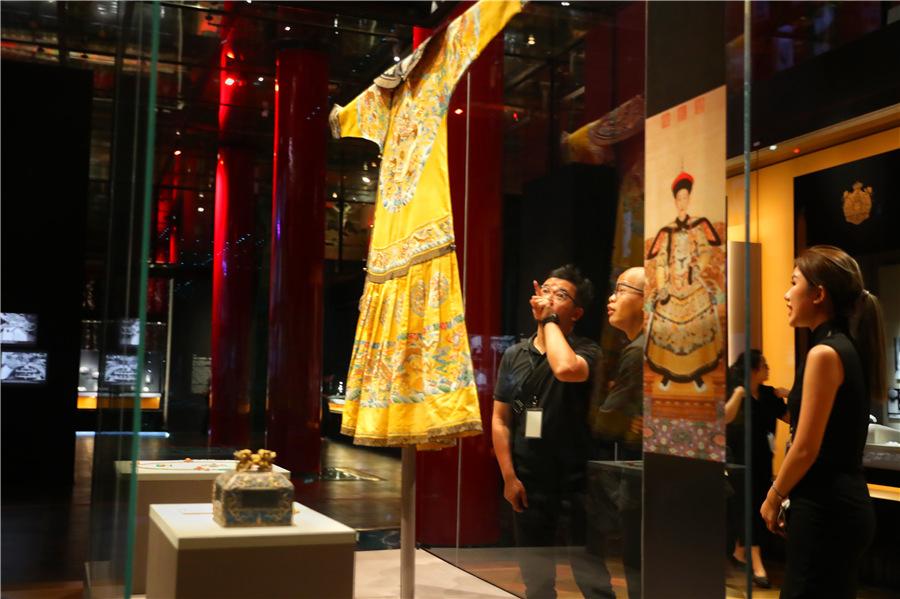
The Palace Museum and Cartier host one of the cultural institution's largest shows on the theme of craftsmanship and restoration over the centuries. (Photo provided to China Daily)
"When it (the exhibition) comes here, it should be inspiring to Chinese people," Vigneron says. "Sometimes you look at things more when someone else looks at it. It's important for the young people not to say (this is) something for the grandparents. They should instead be saying to themselves, let's be inspired by them."
Since it was established in 1983, the Cartier Collection has toured more than 30 major museums around the world, and now has over 1,600 artifacts, according to curator Pascale Lepeu.
Other than Beijing, it has traveled to several other Chinese cities including Shanghai, Chengdu in Sichuan Province, Shenyang in Liaoning Province, and Taipei. Nevertheless, Beijing remains the only city in the world where the Cartier Collection has made a comeback. In 2009, Cartier Treasures-Jeweller to Kings, King of Jewellers was staged at the Meridian Gate Galleries.
"If you want to go beyond the boundaries of time, what can connect us with the past are objects of art or crafts," Vigneron says. "Especially if you preserve them and continue to keep them in good shape through restoration ... they can provide us with a continuous thread."
He adds: "It is not about being nostalgic, but about preparing for the future."

















